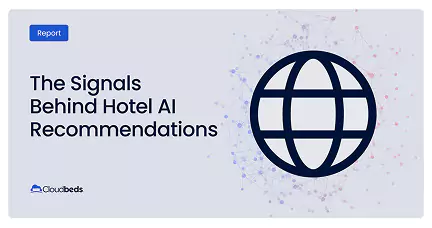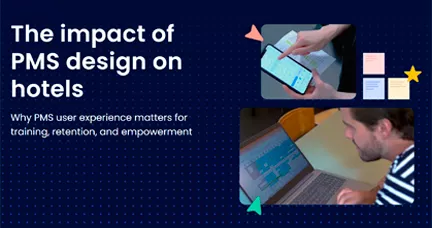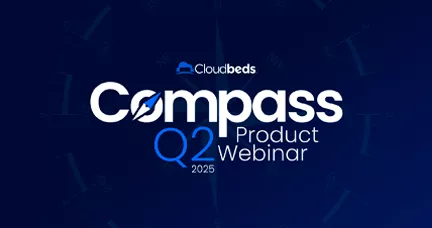Hotels that stick to fixed rates risk missing out when demand spikes or losing bookings when it suddenly drops. Pricing once a season or even once a month no longer cuts it.
Dynamic pricing gives hotels the flexibility to stay competitive in constantly changing markets. By adjusting rates in response to real conditions, properties can protect occupancy and stop leaving revenue behind.
Thankfully for hotels, it doesn’t have to mean more work. With the right revenue management tools, pricing updates can run automatically in the background, freeing your team to focus on guests instead of spreadsheets.
What is dynamic pricing?
Unlike the old-school approach of static hotel pricing (keeping room rates the same regardless of demand), hotel dynamic pricing is about adjusting rates and stay restrictions in response to changes in local demand and market conditions. Dynamic pricing is a core tenet of modern revenue management, or yield management – the practice of managing pricing and room inventory to maximize a hotel’s revenue and profitability. The goal of any pricing strategy is to sell the most rooms at the highest possible rate.
During Passport, Andre Sovgir, Senior Director of Product at Cloudbeds, explained the concept of dynamic pricing using Taylor Swift’s global tour as an example.
Why do hotels need a dynamic pricing strategy?
As consumers, we encounter dynamic pricing everywhere we go – when purchasing airline fares, buying tickets to a high-demand sports game, or taking advantage of markdowns at your local grocery. If you use ride-share apps like Uber and Lyft, you know that prices “surge” during busy times and drop down during slower times. And Amazon reportedly updates different prices for products millions of times per day.
Consumers have grown so used to price fluctuations they now expect them, and the hotel industry is no exception. Chances are your competitors adjust their rates frequently, and if you don’t do the same then you risk being out of sync with the market and pricing your hotel rooms either too low or too high. In either case, you’re leaving money on the table.
So don’t be hesitant about charging fair market value for your available rooms. By applying the benefits of dynamic pricing, even minor adjustments to rates can have a major impact on occupancy and revenue.
3 simple hotel dynamic pricing strategies
One of the reasons static pricing is still so common in the lodging industry is operators aren’t sure how to position their rates. What if you charge too much and occupancy suffers? Or charge too little and sell out with low-rated business?
Fortunately, there are simple strategies to follow to give you more confidence that you’re setting the right price. To illustrate these strategies, let’s imagine that a major concert is announced in your city (Taylor Swift, maybe?) It’s scheduled on a Saturday night three months from now, typically a quiet time of year, and people will travel from all over to attend. This event is expected to bring a spike in room demand – though by how much remains to be seen.
How will you make the most of this opportunity? Consider these three tried-and-true hotel pricing strategies.
1. Adjust room rates based on occupancy
Ideally, as your occupancy increases, you’ll want to raise your rates, as it appears that hotel rooms are in high demand in your market. Hiking rates is often the first reaction to a spike in demand, but sometimes a measured approach is more effective. For example, let’s say you’re running at 20% occupancy today. Rather than increase your daily rates by 40% and risk losing potential bookings by overpricing your property, consider increasing them by 20% now to test the waters. If occupancy climbs to 50%, you can increase rates by another 10%, and so on. Along the way, if the pace of bookings slows down or stops you can always lower prices.
With this approach, you’re more likely to achieve a full house, and it will be at a much higher average rate than if you had kept rates static.
Similarly, if you notice that you’re only 60% booked and the concert is less than one week out, you should lower your rates to try and attract last-minute bookers. After all, a room sold at a discounted rate is better than letting it go empty.
2. Adjust stay restrictions to fill rooms
Hoteliers often focus on filling up busy nights and neglect the slower nights before and after. But if you fill up on one-nighters, you miss opportunities to book longer stays. With simple stay restrictions, you can give pre-and-post-nights a boost.
In the case of the concert, some attendees may decide to make a weekend of it. Other travelers may be planning an extended stay for different reasons. Why not give them preference over one-nighters by implementing a minimum length of stay (MinLOS) such as two or three nights? Or you could close Saturday to arrivals. Even if you offer a lower rate, the added occupancy will boost overall revenue. As the concert date approaches, you can remove the restriction if needed to try and fill the remaining number of rooms.
Stay restrictions help smooth out peaks and valleys in demand and drive higher overall occupancy. They’re not just for special events, you can use them for any patterns in demand, such as slow weekdays and busy weekends.
3. Adjust room rates based on competitor activity
Still not sure how much to charge per night? Check out your competitors’ rates and market trends. It’s a sure thing that travel shoppers are doing it, and so should you. If they perceive your rates as too high relative to comparable hotels, they will book elsewhere. If your rates are too low, they will book up your rooms first, leaving higher-priced business to your competitors.
For these reasons, it’s important to have dynamic rates. Pay special attention to your compset – the group of five or so properties most likely to attract the same type of guests as you. If their rates suddenly go up or down, it’s a signal they’re anticipating a spike or fall in bookings. If you don’t act quickly, you’ll miss out on setting better pricing opportunities.
Getting back to the concert example, competitor pricing will be a good indication of how strong market demand is in your area and how it may change as the big day approaches. Positioning your pricing relative to them is a great way to ensure you don’t sell yourself short or overprice your property either. For example, if you want to boost your occupancy, you may want to set your rates to be 10% cheaper than your highest-priced competitor.
Automate your pricing strategy
We’ve used a concert as an example here, but don’t wait for special events to implement optimal pricing strategies. Rates and stay restrictions should be adjusted on a regular basis to make the most of peaks and valleys in demand.
But that begs the question, who has the time to spy on competitors and constantly adjust rates?
That’s where Cloudbeds Revenue Intelligence comes in. Powered by our proprietary causal AI engine, it automates your pricing strategy by combining real-time competitor data, local event insights, and demand forecasts up to 90 days out.
You can set parameters for automatic rate and restriction adjustments or receive targeted alerts with AI-driven recommendations, ensuring your property stays competitively priced without constant manual oversight.
Maximize revenue opportunities
Revenue management tools are revolutionizing the hospitality industry, allowing hotel businesses, including independent hotels, to win over more profit using a smart dynamic pricing strategy. With a bit of know-how and systems like Cloudbeds Revenue Intelligence, you don’t have to be a revenue management strategy expert.
Just follow these simple pricing strategies, and you will save time and see significant boosts to your bottom line.
Discover the power of Cloudbeds Revenue Intelligence.
Published on 3 December, 2021 | Updated on 3 September, 2025



